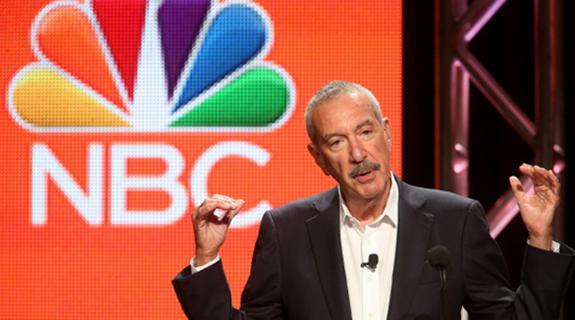Research shows that more than half of viewers say if they can’t easily access past episodes of a show, they’re not going to watch it.
That was the takeaway from Alan Wurtzel, NBC’s president of research and media development, presented to reporters at the Television Critics Association summer press tour Tuesday in Beverly Hills.
“I think that everybody in the business has to take heed of that 54 percent, because that’s a huge issue,” Wurtzel said. “That’s what people want and we need to figure out a way to get it to them.”
On that note, he announced NBC plans to stack full seasons for all of its fall primetime shows, with the exception of Blacklist and Law & Order: SVU.
Wurtzel also pointed out how the television landscape has always evolved over the years, but “today, the disruption is different.”
From smartphones to DVRS and video game consoles, to OTT and smart TVs, a quickly growing amount of technological advances relevant to television have reached or are nearing the 40 percent threshold to qualify as mainstream. With that in mind, NBC announced it will make content available across eight major digital platforms, including Roku, Xbox and Apple TV.
And that, in turn, “evolves media behaviors,” Wurtzel said.
So many different viewing options go hand in hand with people getting overwhelmed by all the series out there and they often struggle with where to start when it comes to deciding what to watch.
There’s also a collective “don’t waste my time” mentality. Viewers are more selective in their programing, and 47 percent wait until they hear good things before turning on a series.
“People in this era want a guarantee that if they watch a show, they’re going to like it,” Wurtzel said.
With that in mind, NBC plans to grow its social-media footprint to more than 205 million followers, particularly across YouTube, Twitter, Vine and Pinterest, in order to foster brand ambassadors and buzz.
Wurtzel also singled out internet-connected devices, such as smart TVs, as examples of where the future is heading, saying the use of those types of devices have doubled over the last 18 months, from 15 to 30 percent.
“It radically changes your access to content,” he said. “You have an almost unlimited amount of content, and that changes behavior.”
Also, with nearly 60 percent of U.S. households now subscribed to SVOD, about 80 percent of sample viewers across all demographics said more people are not watching the same TV shows at the same time.
Not feeling the need to watch episodes when they first air not only plays into that desire to want validation before tuning in, but is also a message to networks to maintain a strong marketing message months down the line.
“That you can just open up a show is not enough anymore,” he said. “You have to refresh people’s knowledge and interest about that show.”
Tags:












































__twocolumncontent.jpg)











